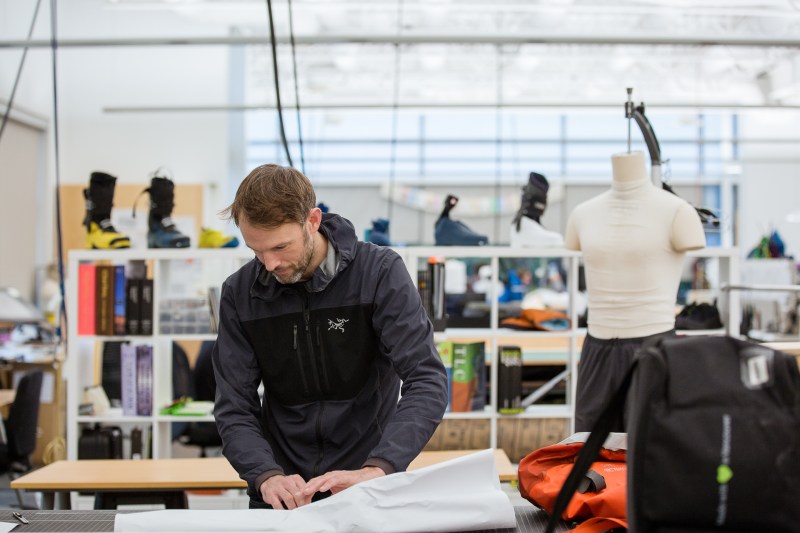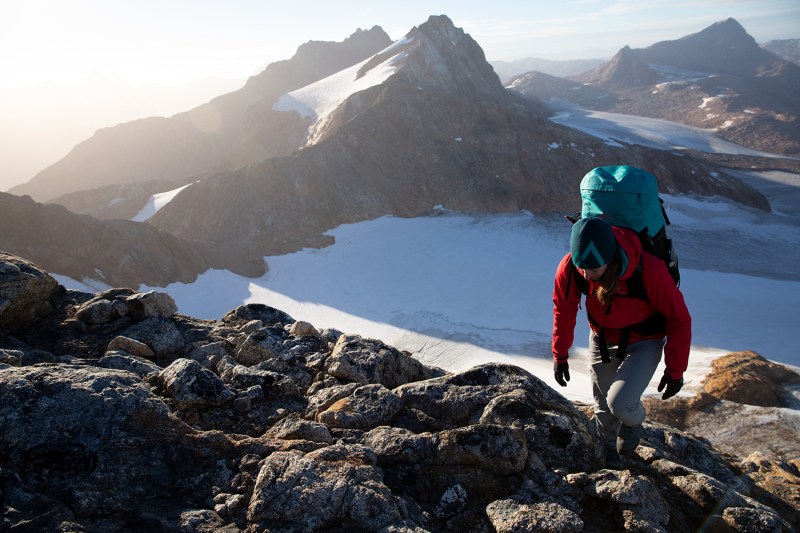It’s likely no secret to you that clothing waste is a massive environmental issue the world over. As fast fashion moved during the last couple of decades, clothes have become disposable items that some people toss after only a few years. Whether the garment is worn out because it’s cheaply made or they simply want something new, this waste has created mountains of clothing in landfills. But some clothing brands and businesses are doing their part to curb the problem, which is exactly the mission of Arc’teryx’s new Rock Solid Used Gear program.
The program is a nod to Arc’teryx’s original name from when the company was created in 1989, Rock Solid, and is essentially a repurposing hub to keep quality products in circulation as long as possible while lessening the company’s environmental footprint. Arc’teryx products are known for their top-of-the-line technical construction, so they are using their extensive knowledge to buy back gently used gear, clean and repair it, and resell it at a lower cost. Not only does this reduce the amount of clothing that ends up in the trash, but it also makes their products affordable to more consumers.

If you live in the United States and want to sell your secondhand Arc’teryx garment to the Rock Solid Used Gear program, you simply need to bring it into one of the brand’s stores or use the digital mail-in portal. The gear is then assessed, and if it’s considered to be in “lightly worn” to “excellent” condition with the inner label still attached, you can receive a gift card valued at 20% of the product’s original price. If an item is too worn in to resell but is still functional, Arc’teryx will donate it to organizations with outdoor programs that need gear. But as the program becomes more successful, the brand is going to explore more circular solutions like repurposing and upcycling for items that can’t be repaired and resold.
To get an insider’s take on Rock Solid Used Gear, we chatted with Arc’teryx’s Vice President of Design, Dan Green.
The Manual: What sparked the idea to create Rock Solid Used Gear? Were you looking to create a sustainable program for the brand or was it simply a happy byproduct of another motivation?
Dan Green: Selling used gear was a natural move for us. It meshes well with our factory and repair capabilities that were already doing a great job of extending the life of our products. For many years, we have witnessed people steadily moving towards more considered choices with our durable, quality goods. The Rock Solid program is our way of adding additional resale value to our product and contributing to a circular economy. A few motivated employees pushed the idea up, and we let them steer and shape the program. It came together quite fast — the environment was right.

TM: There’s already a lot of tech that goes into each Arc’teryx product. Did you create new technology for this program, or are you using garment construction techniques that are already utilized across your product line?
DG: We have always used the highest quality of both traditional sewing techniques and innovative lamination construction technology in our own factory as well as our partner factories around the world. We didn’t need to create any new tech for Rock Solid, but the program only works because we tap back into that network of expertly skilled operators to repair and refurbish, so we can put a meaningful warranty back on our work.
TM: How many garments are you hoping to recycle and put back into circulation in your first year?
DG: Our goal for the year was to get this program cleanly off the ground and start learning. This pilot launch is in the USA, and we will adjust and scale when we’re ready. This is a consumer-driven program, so the potential yearly volume is entirely dependent on how well our tribe engages. At this point, we are just really excited to be part of the circular effort to find better ways of doing things.



